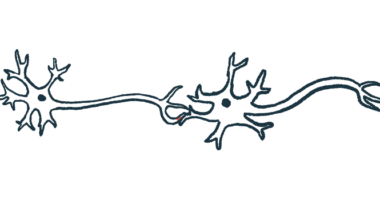FDA clears first-in-human clinical trial of AKV9 in healthy volunteers
Study follows clearance of Akava's IND application by FDA

Akava Therapeutics will soon launch a Phase 1 clinical trial to test AKV9, its investigational therapy for amyotrophic lateral sclerosis (ALS), in healthy people.
The trial follows the clearance of Akava’s investigational new drug (IND) application by the U.S. Food and Drug Administration (FDA). It will be AKV9’s first-in-human study and is designed to evaluate the therapy’s safety, tolerability, and pharmacological properties of single and multiple ascending doses.
“The FDA’s IND approval of AKV9 is a testament to our team’s dedication and the remarkable potential of our approach. We are thrilled to take this important step forward in the development of a groundbreaking therapy for ALS patients,” Richard Silverman, PhD, founder of Akava Therapeutics, said in a company press release.
ALS is caused by the loss of motor neurons, the nerve cells that control voluntary movements, leading to muscle atrophy and the loss of control over vital functions. The disease affects both upper motor neurons, which send messages from the brain to the spinal cord, and lower motor neurons, the nerve cells that connect the spinal cord to the muscles.
What does AKV9 do in ALS?
Most ALS cases are marked by the toxic buildup of proteins, such as SOD-1 and TDP-43, as well as problems in the function of mitochondria and the endoplasmic reticulum (ER) inside motor neurons. Mitochondria are organelles responsible for generating the cells’ energy. The ER is essential for protein production, modification, and transport.
Some treatments can help manage the disease and extend survival by a few months. There is no cure is available for ALS, however, but an unmet medical need remains for treatments that can meaningfully slow disease progression.
AKV9 inhibits protein aggregation and has been shown to improve the health of upper motor neurons via multiple mechanisms. Along with lowering protein clumps, the therapy resulted in increased nerve fiber lengthening and branching, improved mitochondrial and ER integrity, and better motor function in an animal model of ALS carrying SOD1 mutations.
Combining AKV9 with the approved ALS therapies riluzole (sold as Rilutek, among others) and edaravone (sold as Radicava and Radicava ORS) led to even greater improvements in upper motor neuron health in additional experiments in a similar mouse model.
The therapy can also cross the blood-brain barrier, a highly selective membrane that regulates which substances can access the brain and spinal cord from the bloodstream.
“Our goal is to make a meaningful difference in the lives of those affected by neurodegenerative diseases and we are excited about the potential impact of AKV9 in addressing this devastating disease,” Silverman said.







